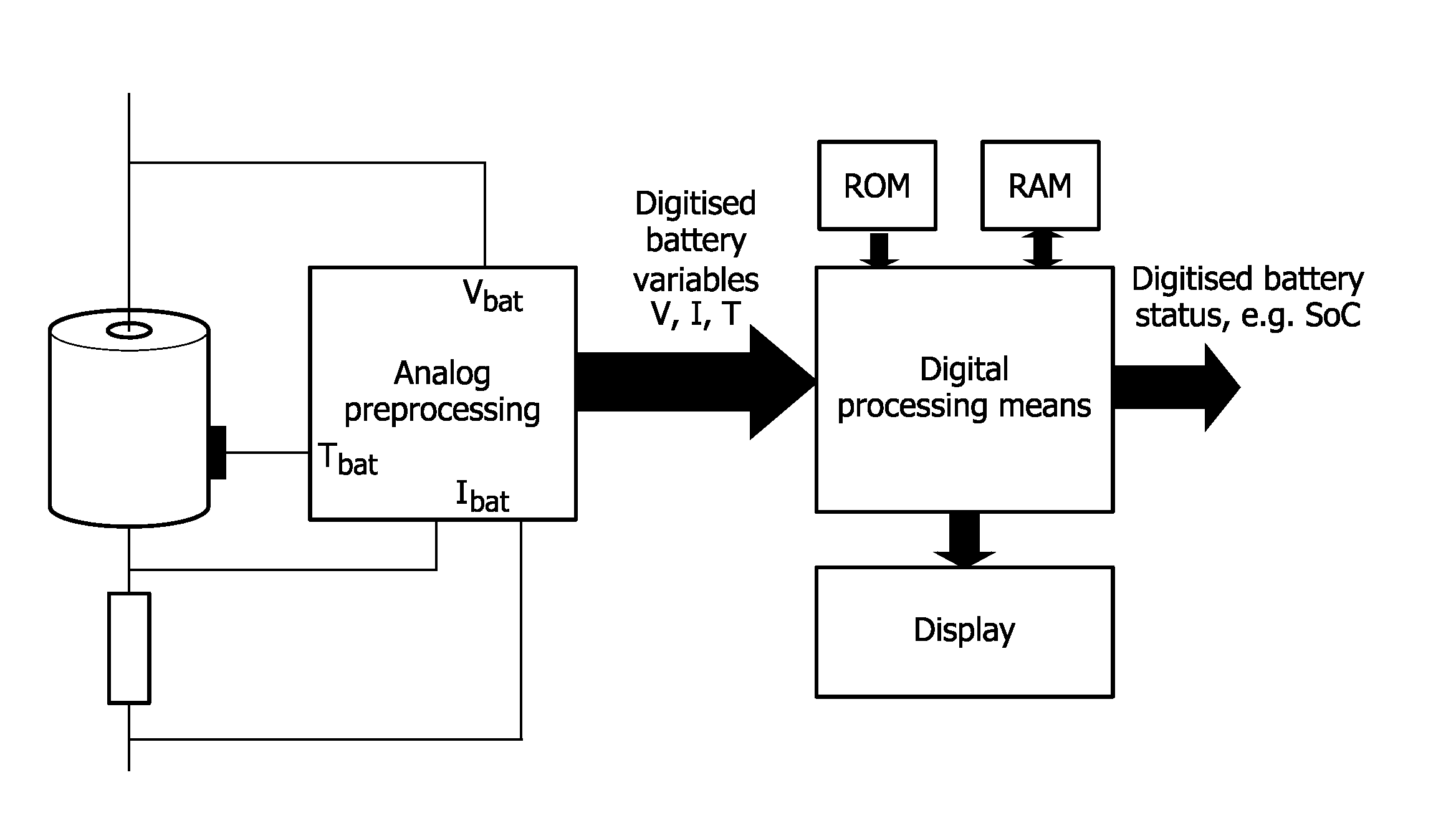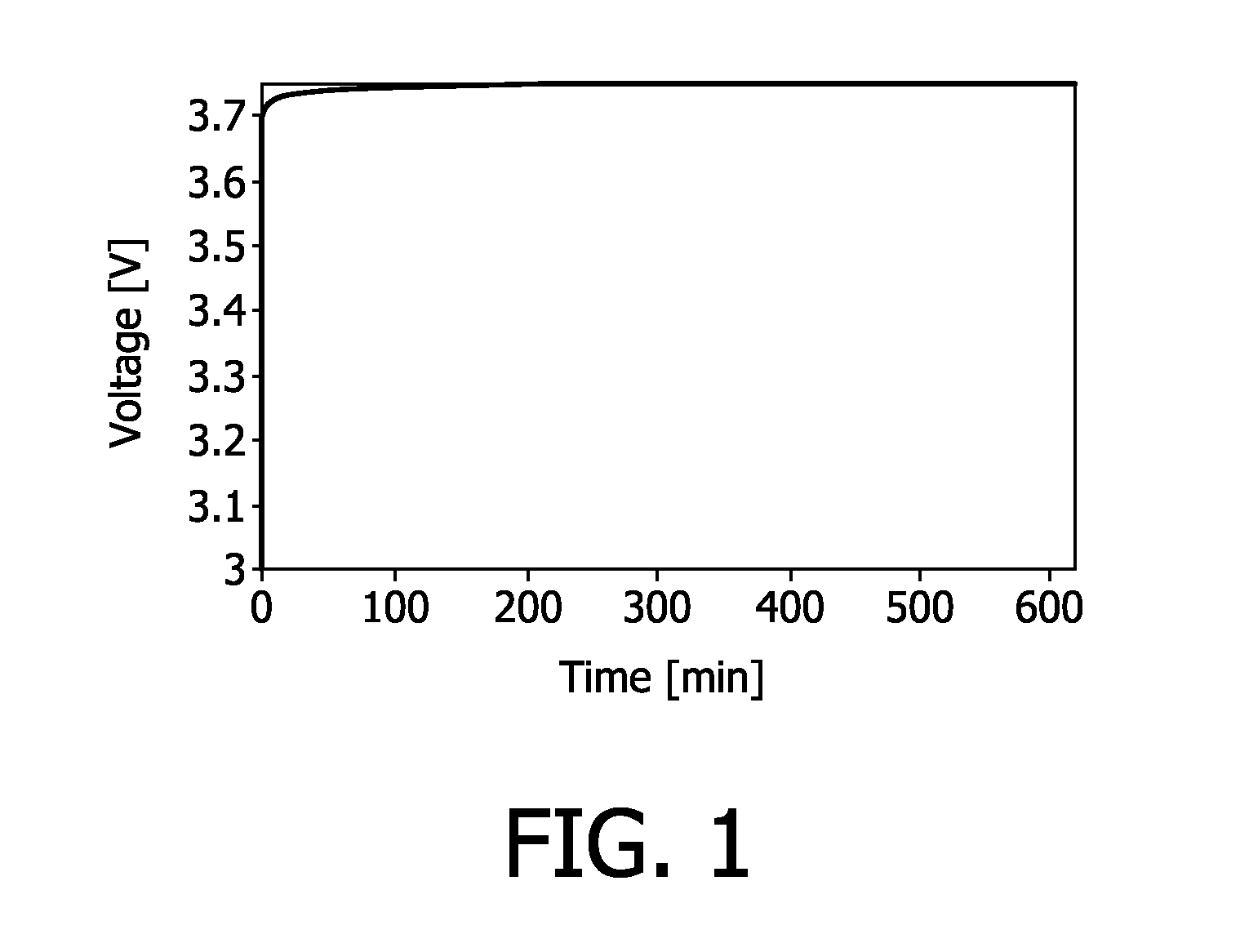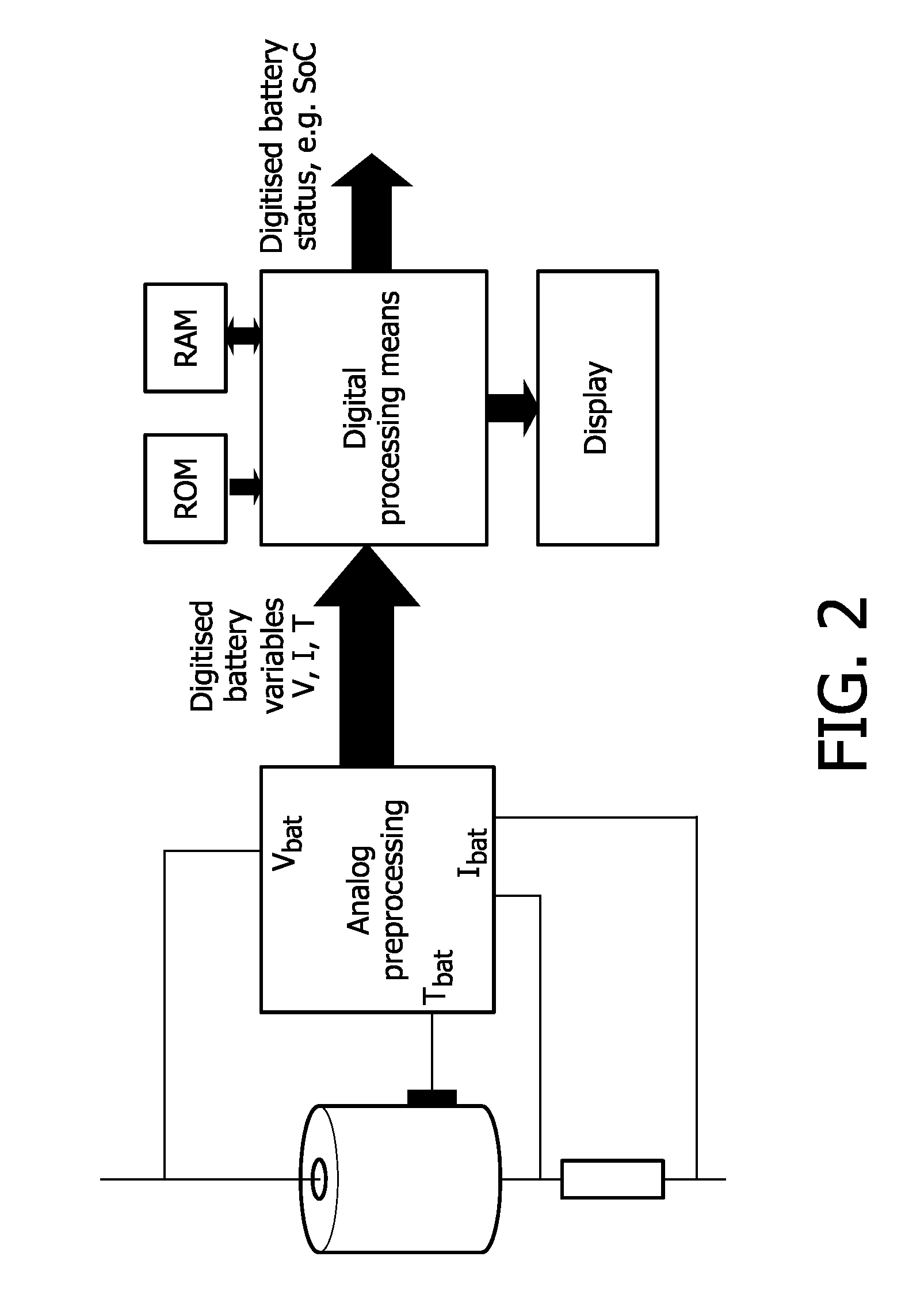Apparatus and method for determination of the state-of-charge of a battery when the battery is not in equilibrium
a battery and state-of-charge technology, applied in the field of apparatus and method for determining the state-of-charge of a battery when the battery is not in equilibrium, can solve the problems of not working during external current flow or after current flow before the battery voltage has fully relaxed, not the case, and the storage charge is not available to the user, so as to minimize the effect of such spikes
- Summary
- Abstract
- Description
- Claims
- Application Information
AI Technical Summary
Benefits of technology
Problems solved by technology
Method used
Image
Examples
Embodiment Construction
[0050]As described in the previous sections the newly proposed voltage-prediction model can be used advantageously in the prior-art SoC indication algorithm disclosed in U.S. Pat. No. 6,420,851 and U.S. Pat. No. 6,515,453. However, it can also be used in any SoC indication method in which the EMF of the battery is used to determine the SoC. For example, in the past many SoC systems designed for lead-acid batteries made use of the linear relationship between the lead-acid-battery EMF and SoC. As soon as a charge or discharge current is interrupted, the method allows determining the EMF quickly, i.e. in a few minutes, based on measured voltage samples from the battery relaxation curve.
[0051]A general block diagram of how the voltage-prediction method may be implemented in an SoC indication system is given in FIG. 2. The battery voltage Vbat, current Ibat and temperature Tbat are measured by means of an analog pre-processing unit, including e.g. filtering, amplification and digitisatio...
PUM
 Login to View More
Login to View More Abstract
Description
Claims
Application Information
 Login to View More
Login to View More - R&D
- Intellectual Property
- Life Sciences
- Materials
- Tech Scout
- Unparalleled Data Quality
- Higher Quality Content
- 60% Fewer Hallucinations
Browse by: Latest US Patents, China's latest patents, Technical Efficacy Thesaurus, Application Domain, Technology Topic, Popular Technical Reports.
© 2025 PatSnap. All rights reserved.Legal|Privacy policy|Modern Slavery Act Transparency Statement|Sitemap|About US| Contact US: help@patsnap.com



